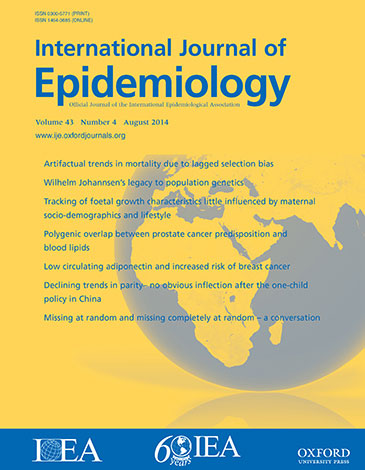The potential bias introduced into COVID-19 vaccine effectiveness studies at primary care level due to the availability of SARS-CoV-2 tests in the general population.
IF 5.9
2区 医学
Q1 PUBLIC, ENVIRONMENTAL & OCCUPATIONAL HEALTH
引用次数: 0
Abstract
BACKGROUND With SARS-CoV-2 self-tests, persons with acute respiratory infections (ARI) can know their COVID-19 status. This may alter their decision to consult a general practitioner (GP), potentially biasing COVID-19 vaccine effectiveness (VE) studies. We explore bias mechanisms, simulate magnitude, and verify control methods. METHODS We used directed acyclic graphs (DAGs) to illustrate the bias mechanisms. Based on the European primary care VEBIS multicentre test-negative design (TND) study, we simulated populations with varying true VE (20%-60%), proportions of persons with ARI self-testing (10%-30%), effect of COVID-19 vaccination on self-testing (1.5-2.5), and effect of self-test result on GP consultation (0.5-2). We performed 5000 runs per scenario, estimating VE among those consulting a GP. We calculated bias as true VE minus mean simulated VE, unadjusted and adjusted for self-testing, using logistic regression. RESULTS DAGs suggested collider stratification bias if vaccination had an effect on self-testing and if self-test results affected GP consultation. Bias was -12% to 18% at 20% true VE, with the most extreme associations and 30% self-testing. With 60% true VE and 10%-20% self-testing, bias was lower. Bias was higher (-18% to 45%) if both positive and negative self-test results affected GP consultation. Adjusting for self-testing removed the bias. CONCLUSIONS Self-testing may bias COVID-19 VE TND studies in primary care if self-testing is high, particularly with low VE. We recommend primary care TND VE studies collect self-testing information to eliminate potential bias. Observational studies are needed to understand the relationship between vaccination, self-testing, and GP consultation, in these studies' source population.由于在普通人群中可获得SARS-CoV-2检测,在初级保健水平的COVID-19疫苗有效性研究中引入了潜在的偏差。
背景通过SARS-CoV-2自我检测,急性呼吸道感染(ARI)患者可以了解自己的COVID-19状态。这可能会改变他们咨询全科医生(GP)的决定,潜在地影响COVID-19疫苗有效性(VE)研究。我们探索偏置机制,模拟幅度,并验证控制方法。方法用有向无环图(dag)说明偏置机制。基于欧洲初级保健VEBIS多中心检测阴性设计(TND)研究,我们模拟了不同真实VE(20%-60%)、ARI自检比例(10%-30%)、COVID-19疫苗接种对自检的影响(1.5-2.5)和自检结果对全科医生咨询的影响(0.5-2)的人群。我们对每个场景执行了5000次运行,估计了咨询GP的人的VE。我们计算偏差为真实VE减去平均模拟VE,未经调整和自我测试调整,使用逻辑回归。结果如果疫苗接种对自检有影响,如果自检结果影响全科医生咨询,dags提示碰撞分层偏倚。在20%的真实VE中,偏差为-12%至18%,其中最极端的关联和30%的自我测试。60%的真实VE和10%-20%的自我测试,偏差较低。如果阳性和阴性自检结果都影响全科医生咨询,则偏倚更高(-18%至45%)。自我测试的调整消除了偏差。如果自检水平高,尤其是低VE,自检可能会对初级保健中的COVID-19 VE TND研究产生偏倚。我们建议初级保健TND VE研究收集自我测试信息以消除潜在的偏倚。在这些研究的源人群中,需要进行观察性研究来了解疫苗接种、自我检测和全科医生咨询之间的关系。
本文章由计算机程序翻译,如有差异,请以英文原文为准。
求助全文
约1分钟内获得全文
求助全文
来源期刊

International journal of epidemiology
医学-公共卫生、环境卫生与职业卫生
CiteScore
13.60
自引率
2.60%
发文量
226
审稿时长
3 months
期刊介绍:
The International Journal of Epidemiology is a vital resource for individuals seeking to stay updated on the latest advancements and emerging trends in the field of epidemiology worldwide.
The journal fosters communication among researchers, educators, and practitioners involved in the study, teaching, and application of epidemiology pertaining to both communicable and non-communicable diseases. It also includes research on health services and medical care.
Furthermore, the journal presents new methodologies in epidemiology and statistics, catering to professionals working in social and preventive medicine. Published six times a year, the International Journal of Epidemiology provides a comprehensive platform for the analysis of data.
Overall, this journal is an indispensable tool for staying informed and connected within the dynamic realm of epidemiology.
 求助内容:
求助内容: 应助结果提醒方式:
应助结果提醒方式:


